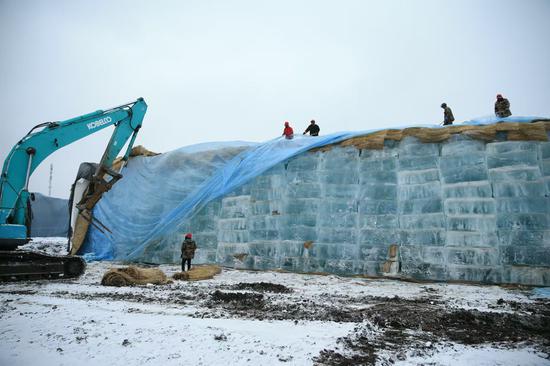China has recently put into operation its first overseas atmospheric background station in Antarctica, a culmination of its four decade-long presence in the region.
The Zhongshan National Atmospheric Background Station, situated on the Antarctic continent, officially began operations on Sunday during the commemoration of World Antarctic Day, marking a milestone in the country's 40 years of polar expeditions.
The station is China's first overseas station of its kind and the ninth atmospheric background station to become operational nationwide. Its launch comes after 16 years of scientific research and innovation, integrating the facility into China's atmospheric observation network, according to the China Meteorological Administration.
It will conduct continuous, long-term monitoring of atmospheric composition and concentration changes in Antarctica, providing crucial data to enhance global efforts against climate change.
"The Antarctic region serves as a critical background for global atmospheric observation," said Ding Minghu, director of the Institute of Global Change and Polar Meteorology at the Chinese Academy of Meteorological Sciences.
Polar regions are "amplifiers" of global climate change, Ding said. Observation data from Zhongshan Station hold unique scientific value for understanding long-term atmospheric changes, stratosphere-troposphere interactions and the impact of human activities on the planet, he said.
The foundation for atmospheric observation at Zhongshan Station was laid from 2007 to 2008 during the fourth International Polar Year, a large scientific program focused on the Arctic and Antarctic organized by the International Council for Science and the World Meteorological Organization.
An atmospheric chemistry shelter equipped with ozone spectrometers and radiation monitors was installed at that time, according to the CMA.
By 2010, China had launched a high-precision greenhouse gas monitoring system at the station, enabling the continuous, high-resolution measurement of carbon dioxide and methane, which made China the third country globally capable of conducting such operations in Antarctica.
The station has since developed a comprehensive observing system, including seven meteorological categories such as ozone, atmospheric chemistry, total radiation and aerosols.
Such data is integral to global research, having been featured in the WMO's Antarctic Ozone Bulletin and CMA's State of Polar Climate reports.
Data from the facility promoting research in fields such as polar weather and climate changes has been cited many times by scientists, according to the CMA.
China's national atmospheric observation network currently comprises nine operational background stations, including the Waliguan Baseline Observatory in Qinghai province. Ten additional stations are undergoing one-year observation trials which were initiated in July, according to the CMA.


















































 京公网安备 11010202009201号
京公网安备 11010202009201号